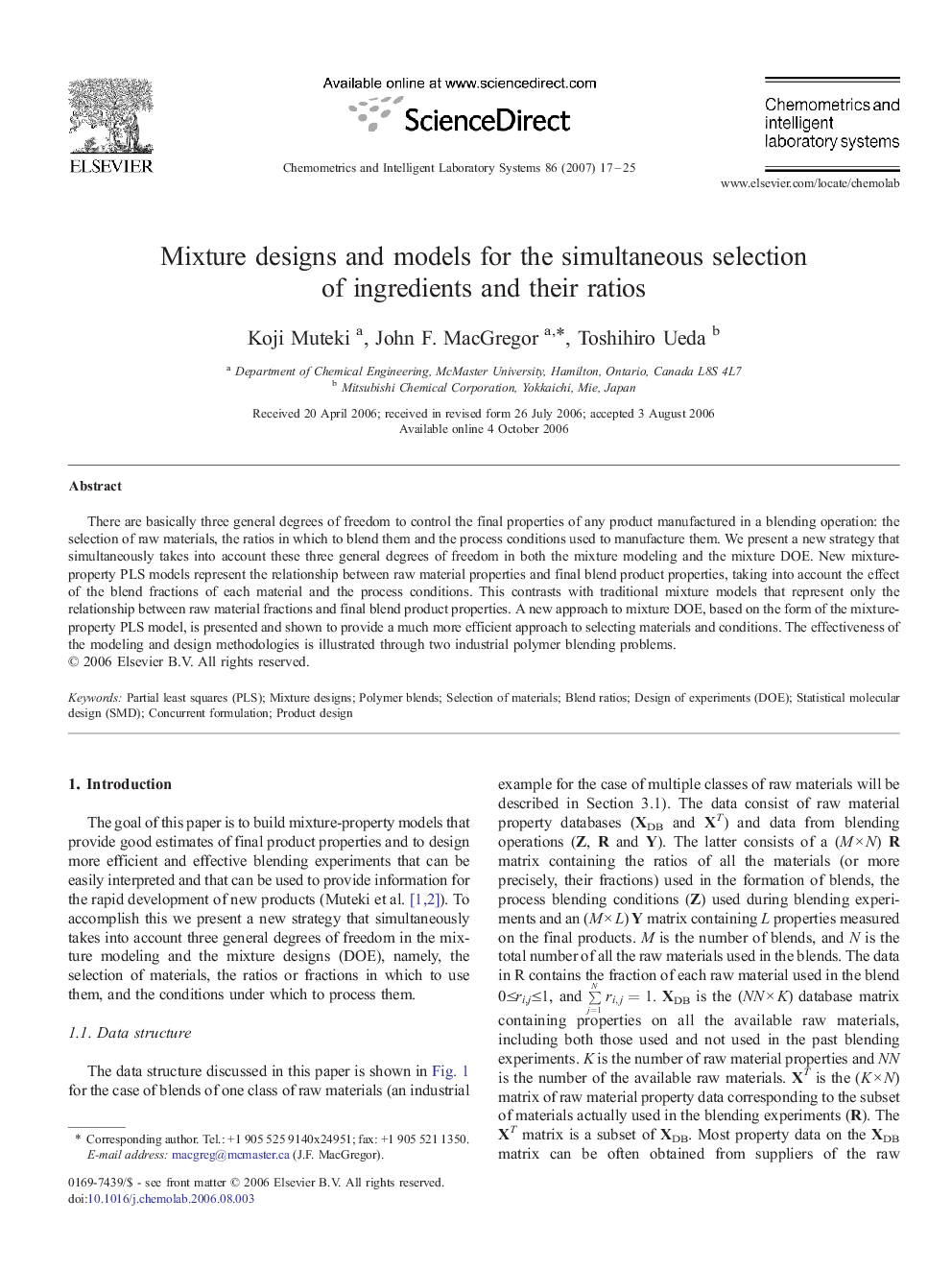| Article ID | Journal | Published Year | Pages | File Type |
|---|---|---|---|---|
| 1180600 | Chemometrics and Intelligent Laboratory Systems | 2007 | 9 Pages |
There are basically three general degrees of freedom to control the final properties of any product manufactured in a blending operation: the selection of raw materials, the ratios in which to blend them and the process conditions used to manufacture them. We present a new strategy that simultaneously takes into account these three general degrees of freedom in both the mixture modeling and the mixture DOE. New mixture-property PLS models represent the relationship between raw material properties and final blend product properties, taking into account the effect of the blend fractions of each material and the process conditions. This contrasts with traditional mixture models that represent only the relationship between raw material fractions and final blend product properties. A new approach to mixture DOE, based on the form of the mixture-property PLS model, is presented and shown to provide a much more efficient approach to selecting materials and conditions. The effectiveness of the modeling and design methodologies is illustrated through two industrial polymer blending problems.
